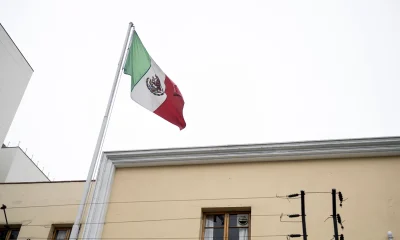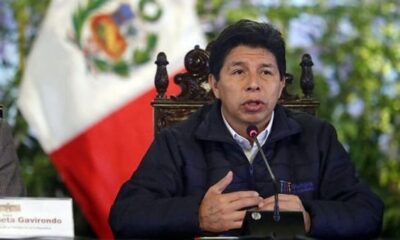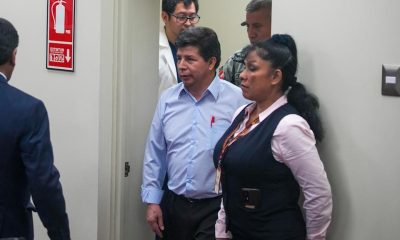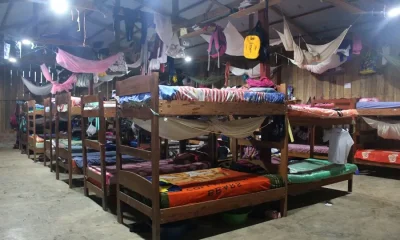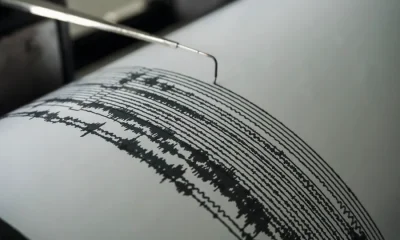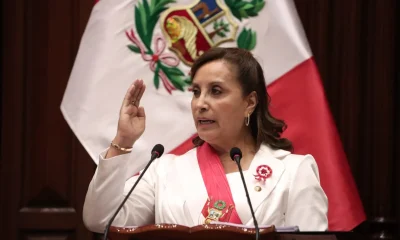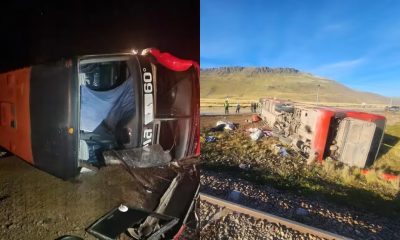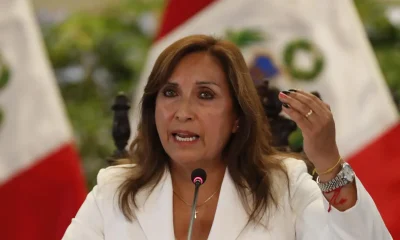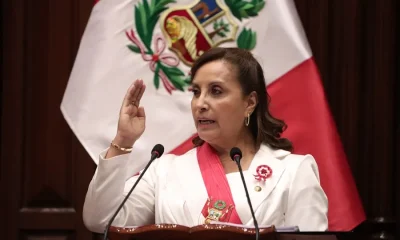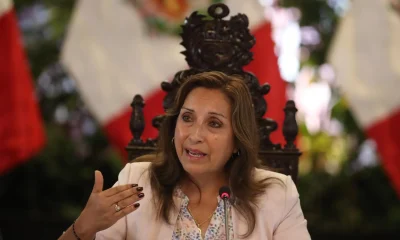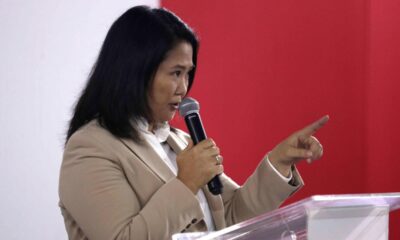International
Clashes in Lima as thousands rally against Peru government
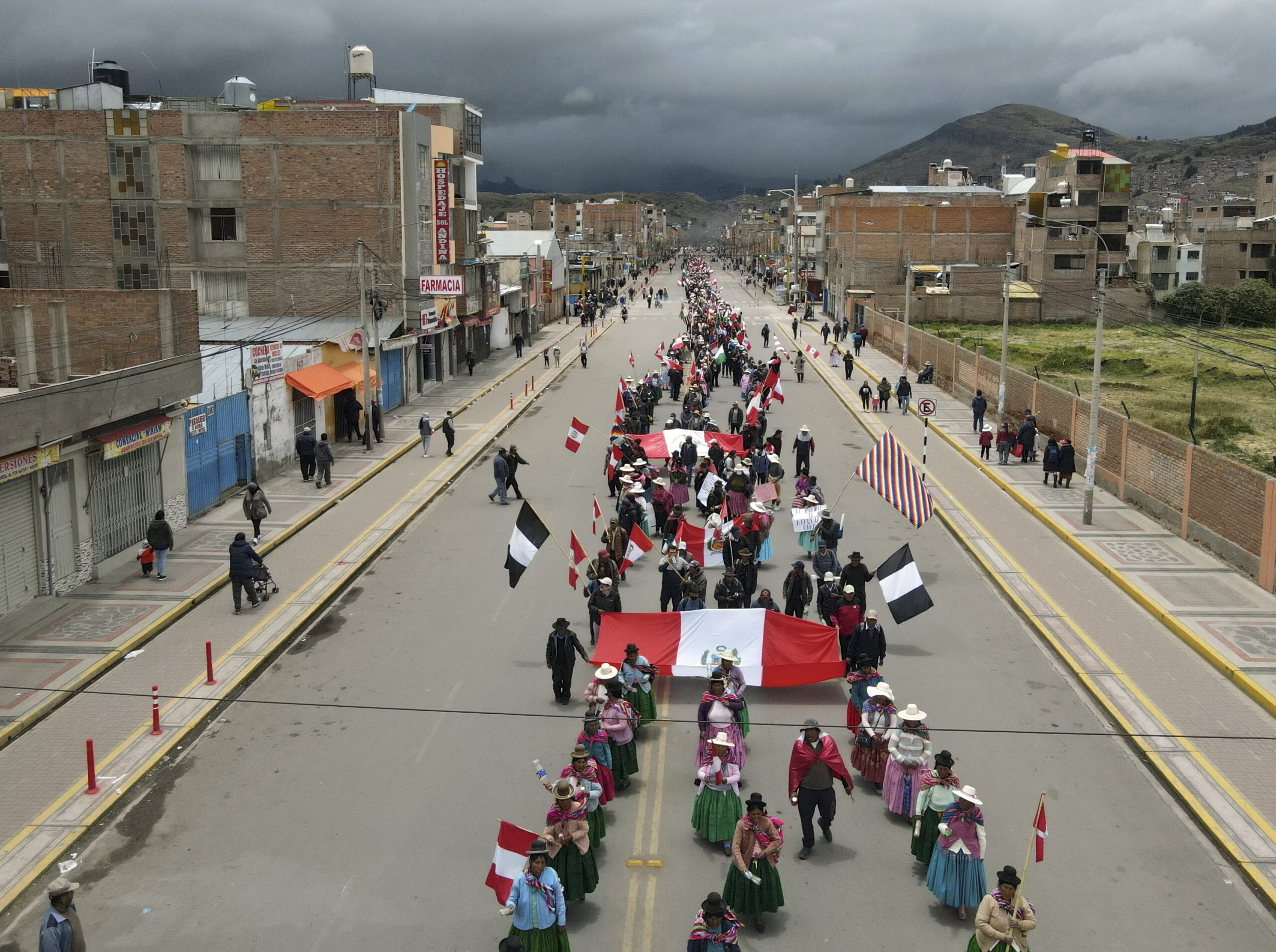
January 20 | By AFP | Carlos Mandujano / Luis Jaime Cisneros |
Thousands marched through Peru’s capital Thursday in a large anti-government rally punctuated by clashes with police, while the death toll from over a month of violent protests climbed in the country’s southern regions.
Some of the Lima protesters, who are demanding the resignation of President Dina Boluarte and fresh elections, threw stones and bottles at officers in the city center, AFP reporters saw.
The police were forced to temporarily retreat before they dug in behind riot shields and began deploying tear gas. At least two people were injured.
One building near the central Plaza San Martin caught fire, though it was not immediately clear how.
Peru has been rocked by protests since the ouster of Boluarte’s predecessor, Pedro Castillo, in early December — though violent clashes have largely been isolated thus far to the country’s south and east.
In the southern city of Arequipa, some 1,000 protesters tried early Thursday to storm the airport, but were also repelled by police firing tear gas, local television showed.
Peru’s human rights ombudsman later announced that one person had been killed in Arequipa, adding to two other deaths resulting from clashes on Wednesday and raising the nationwide death toll to 45.
The demonstrators in Lima, who are mostly from Andean regions, set off from several points around the capital with the aim of reaching the heavily-guarded presidential palace by the end of Thursday.
“Dina listen, the people disown you,” they chanted, while others called for the president to be assassinated.
“We are here, fighting for our just cause. We want them to close Congress,” villager Ayda Aroni, who came from Ayacucho, 330 kilometers (205 miles) southeast of Lima, told AFP.
“We are marginalized, they say we’re vandals, they call us terrorists, we’re demanding our rights.”
“I am in Lima to defend the country because there is too much corruption. Dina does not represent us. We’re going to stay for a week to continue the demonstrations,” said Demetrio Jimenez, who came from Puno, near the Bolivian border.
Demonstrators also tried to once again take over the airport in Cusco, a popular tourist destination, though it was closed; while there were similar protests in regions such as Puno, Huanuco and Tacna.
Boluarte called for dialogue late Thursday.
“I will not tire” of seeking peaceful ways to move the country forward, she said on state television — adding that the “acts of violence generated throughout December and now in January will not go unpunished.”
Ready to ‘give my life’
The protesters in Lima are trying to keep up pressure on the government, defying a state of emergency declared to maintain order.
On Thursday, the emergency was extended to three more regions, bringing almost one-third of the country under the order.
“We have 11,800 police officers in the streets to control unrest, we have more than 120 vans and 49 military vehicles, and also the armed forces are participating,” said police chief Victor Zanabria Thursday.
Protesters are undeterred, though.
“In Lima, the struggle has more weight. When they repress us in our regions, no one mentions it,” said Abdon Felix Flores, a 30-year-old villager from Andahuaylas in the Cusco region.
Flores said he was ready “to give my life” to ensure change.
“We have come in an organized way to take over Lima, to paralyze Lima, to be heard,” said Jesus Gomez, an agricultural engineer from Chumbivilcas, also in the Cusco region.
One of Peru’s biggest labor unions, the General Confederation of Workers, called a strike for Thursday, though there were no visible signs of such a strike in Lima.
“The Peruvian people’s struggle will not end tomorrow,” Geronimo Lopez, the general secretary of the General Confederation of Workers, said in a press conference late Wednesday night.
“It will continue as long as Mrs Dina Boluarte doesn’t listen to the people,” added Lopez.
‘Traitor’
Peru’s sports institute suspended the start of the national football league this weekend due to the unrest, while almost 100 roadblocks remain across Peru.
Castillo was removed from office and arrested on December 7 after attempting to dissolve the country’s legislature and rule by decree, amid multiple corruption investigations.
The crisis also reflects the huge gap between the capital and the rural provinces, which supported Castillo and saw his election as revenge for Lima’s contempt.
Boluarte, who was Castillo’s vice president, succeeded him. But despite Boluarte belonging to the same left-wing party, Castillo supporters have rejected her, even accusing her of being a “traitor.”
International
Rubio rules out 2028 presidential bid if Vance runs
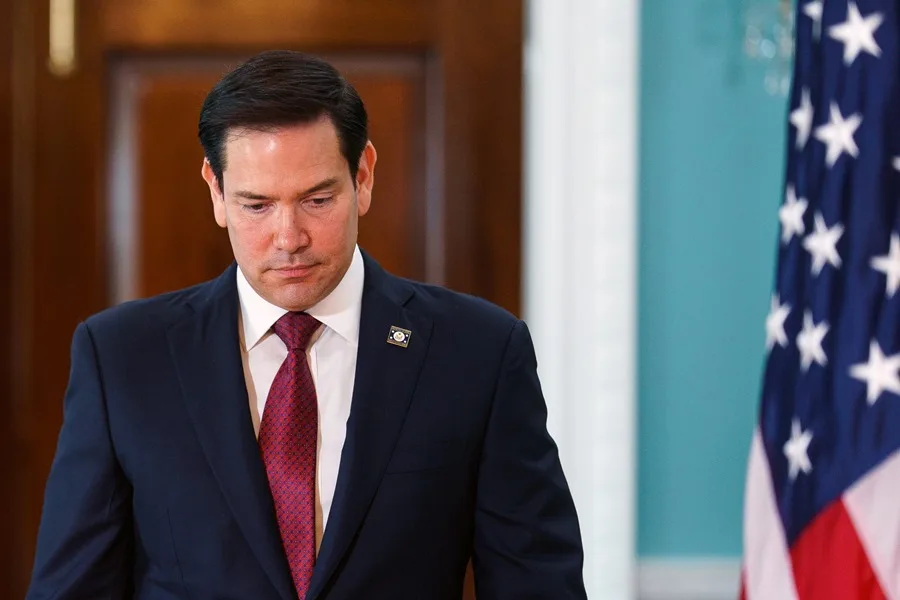
U.S. Secretary of State Marco Rubio said he would not seek the presidency in 2028 if current Vice President JD Vancedecides to run as the Republican nominee to succeed President Donald Trump.
“If JD Vance runs for president, he will be our candidate, and I will be one of the first people to support him,” Rubio said in an interview with Vanity Fair, in which he appeared alongside other senior members of the presidential cabinet.
Rubio, 54, and Vance, 41, are widely viewed as two of the leading Republican figures who could headline the party’s ticket in the 2028 election. Under the U.S. Constitution, Trump is barred from seeking another term after completing two presidential mandates.
In a lighthearted moment during the interview, Vance jokingly offered photographers $1,000 if they managed to make him look better than Rubio in the photos. Both leaders have received public backing from Trump, who last October floated the idea of a joint ticket featuring Rubio and Vance, without clarifying who would lead it.
“I think that if they ever teamed up, they would be unstoppable. I don’t think anyone would run against us,” Trump said at the time.
White House Chief of Staff Susie Wiles, who also took part in the interview, confirmed that Trump does not intend to violate the 22nd Amendment, which prohibits a third presidential term, though she acknowledged that the president is “having fun” with speculation about a possible return to office.
Rubio, the son of Cuban immigrants, served as a Republican senator from 2010 to 2025. He sought the party’s presidential nomination in 2016 but was defeated by Trump after a bruising primary contest. His name was floated as a potential vice presidential pick in 2024, but Vance ultimately secured the spot. After taking office, Trump appointed Rubio as secretary of state, making him the first Latino to hold the position.
International
Authorities search for armed and dangerous suspect in fatal Brown University attack
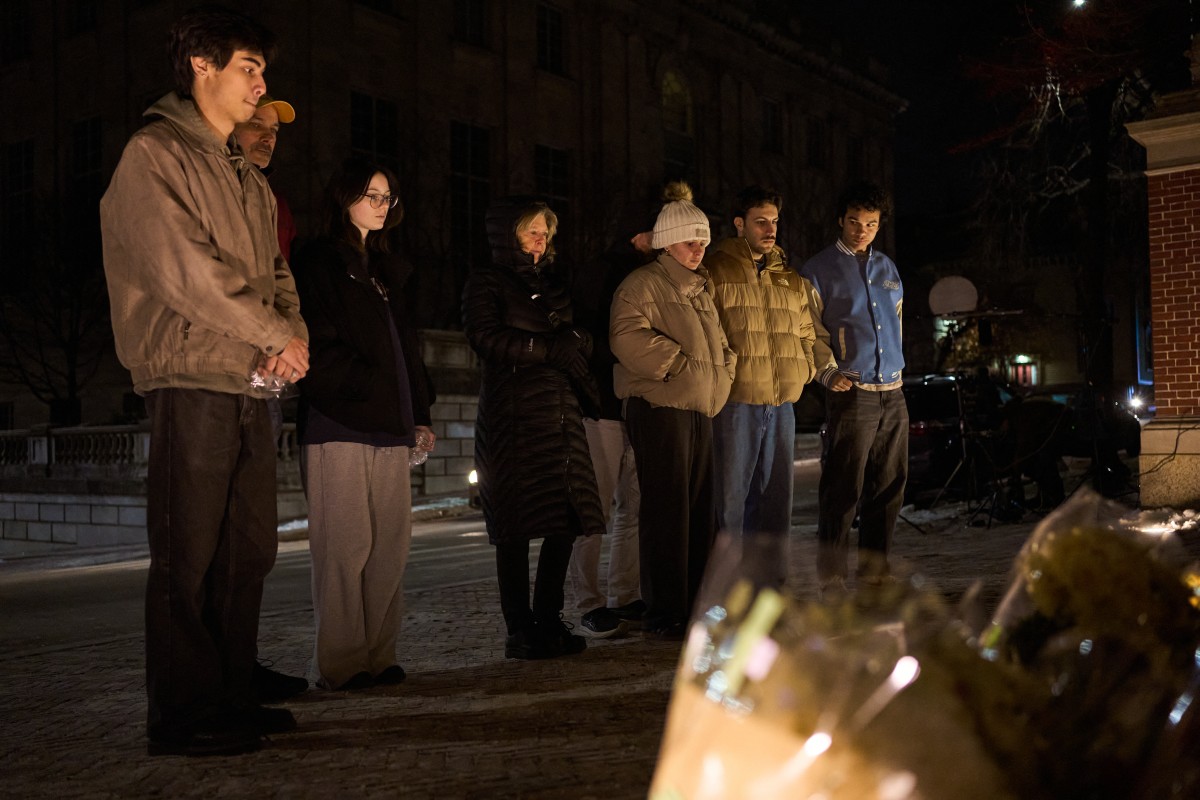
According to the statement, investigators are “seeking the public’s help to identify and speak with an individual” who was seen “near” the suspect at the time of the attack.
The Providence Police Department in Rhode Island released three photos of the person of interest, whose face has been blurred. In the images, the individual is wearing navy blue clothing, what appears to be a green hood, and carrying a light-colored backpack.
Earlier, authorities had released several photos and videos of a suspect described as “approximately 5 feet 8 inches tall, with a stocky build,” dressed in dark clothing, with their face covered by a surgical mask and wearing a beanie. The suspect’s identity remains unknown.
Authorities are offering a $50,000 reward for any information leading to the identification, arrest, and conviction of the person responsible for the killings, who is considered armed and dangerous.
The gunman opened fire on Saturday at Brown University’s engineering and physics building, where exams were being held, killing students Ella Cook and Mukhammad Aziz Umurzokov. The names of the nine people injured have not been released.
International
Police investigate deaths of Rob Reiner and wife as apparent homicide

The Los Angeles Police Department (LAPD) is investigating the deaths of Hollywood actor and filmmaker Rob Reinerand his wife as an “apparent homicide,” amid a wave of tributes to the director of classics such as When Harry Met Sally.
According to U.S. media reports on Sunday, Rob Reiner and Michele Singer Reiner were found dead at their Los Angeles mansion with what appeared to be stab wounds.
Several political figures shared messages of condolence following the reported deaths of the director of A Few Good Menand his wife.
While the LAPD did not officially confirm the identities of the victims, it stated that homicide detectives were dispatched to the Reiner residence.
“At this time, no additional details are available and the investigation into an apparent homicide is ongoing,” the Los Angeles Police Department said in a statement posted on social media.
LAPD Deputy Chief Alan Hamilton told reporters that no arrests have been made and that no individuals are currently being questioned as suspects.
“I’m not going to confirm whether anyone is being questioned at this moment or not. We are going to try to speak with as many family members as we can,” Hamilton said.
CNN reported that a family spokesperson confirmed the deaths of Reiner and his wife.
California Governor Gavin Newsom, former U.S. President Barack Obama, and former Vice President Kamala Harrisissued statements expressing their condolences.
-

 Central America3 days ago
Central America3 days agoPanama seizes over three tons of drugs hidden in Caribbean port container
-

 International3 days ago
International3 days agoPolice investigate deaths of Rob Reiner and wife as apparent homicide
-

 International5 days ago
International5 days agoSeveral people shot in attack on Brown University campus
-

 Central America3 days ago
Central America3 days agoOAS urges swift recount in Honduras as election results remain uncertain
-
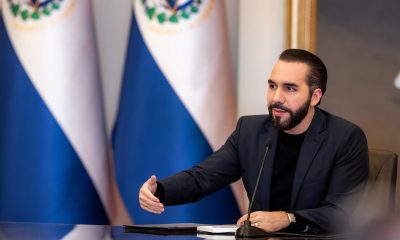
 Central America2 days ago
Central America2 days agoBukele says AI partnership with xAI will transform public education in El Salvador
-
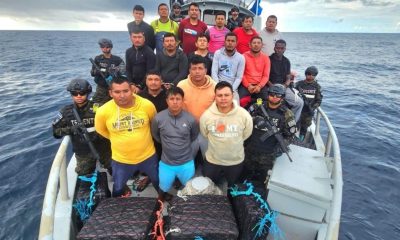
 Central America2 days ago
Central America2 days agoEl Salvador ranks among top countries in the Americas in fight against organized crime
-

 International5 days ago
International5 days agoU.S. and Mexico Reach Deal to Address Water Deficit Under 1944 Treaty
-
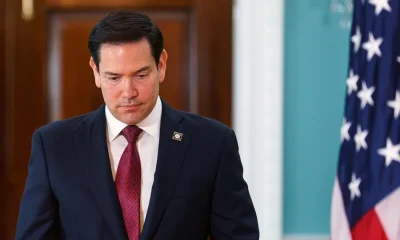
 International17 hours ago
International17 hours agoRubio rules out 2028 presidential bid if Vance runs
-

 Central America17 hours ago
Central America17 hours agoArrests and clashes in Tegucigalpa as vote count continues after Honduras election
-
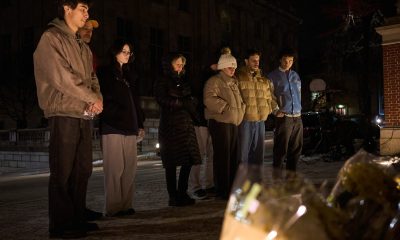
 International17 hours ago
International17 hours agoAuthorities search for armed and dangerous suspect in fatal Brown University attack

























